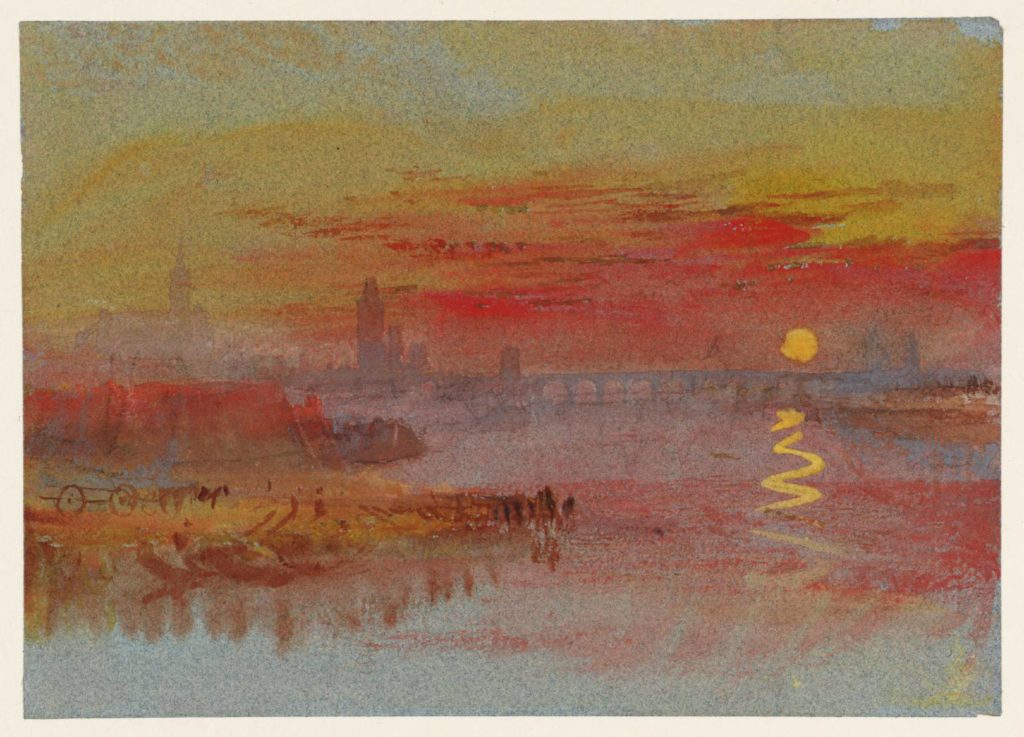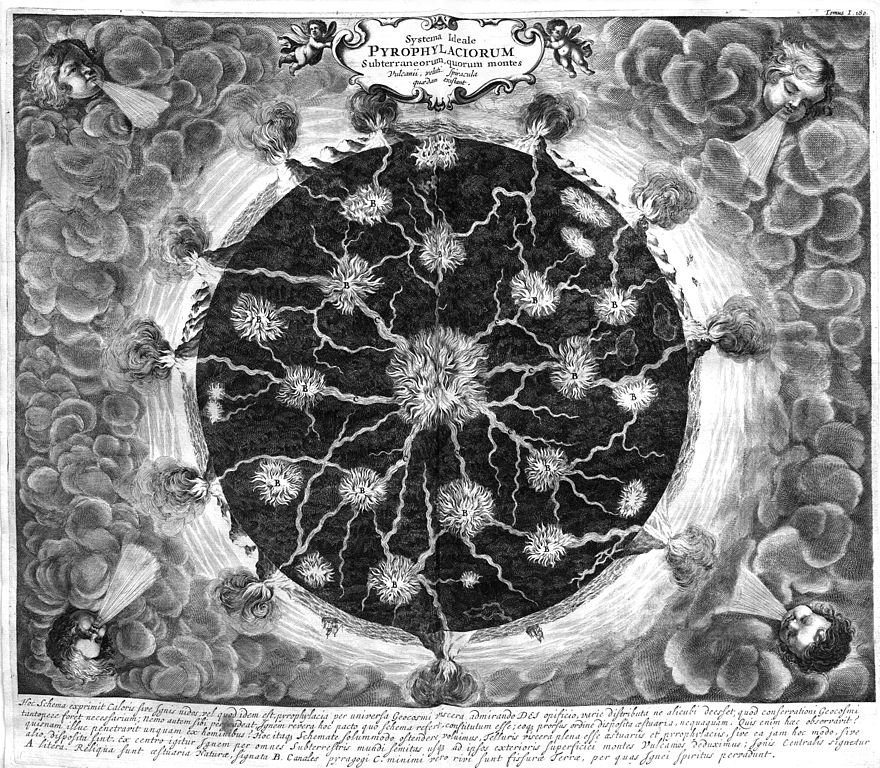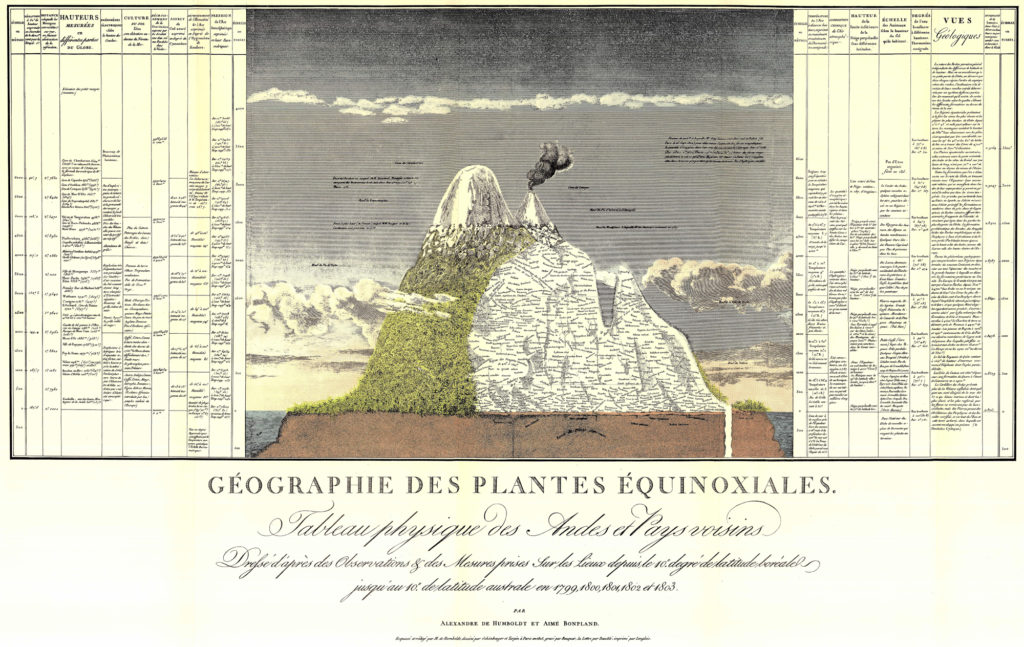Those of us who live in the UK probably do not think about volcanoes too often, after all, you would have to travel very far to find one that is active. Even so, during its geological history Britain was not exempt from violent volcanic activity: the gorgeous Giant’s Causeway formations in Northern Ireland and the granite rock on which the Edinburgh Castle stands are just a few examples of Britain’s volcanic past. In many other countries, however, volcanoes are not only the objects of scientific study—they are also an integral part of the local society, culture, and economy.
Recently, I had the pleasure of visiting the new exhibition in the Bodleian Libraries, which explores the history of scientific inquiry into volcanoes through the objects found at the Bodleian. The curator of the exhibition, Professor David Pyle was very kind to show me around. To be frank, going in I knew exceedingly little about volcanoes themselves, I am a virologist after all. Thanks to David and the exhibition, I can now confidently say that I appreciate much more why the scientific and historical exploration of volcanoes is something we should all pay a bit more attention to. From Pompeii to Frankenstein and beyond, volcanoes have shaped our lives, even if their lasting influence has been largely forgotten.
Lets start from the beginning though- what is a volcano? In the popular imagination it is a mountain of molten rock. However, a volcano does not need to be a towering mound of earth—a simple shaft through which magma can rise, would still qualify for the title. Many volcanoes occur at the boundaries of tectonic plates. The Ring of Fire, which surrounds the pacific, contains approximately 75% of all the active volcanoes. The volcanic eruptions in the Ring of Fire are a consequence of tectonic plates colliding and sliding under one another (termed subduction zones). By contract, the volcanoes at the Mid-Atlantic Ridge, most of which are underwater but also include the Icelandic volcanoes, are a consequence of the plates moving away from each other (termed divergent plate boundaries). Plate boundaries are not the only places where volcanoes can erupt, weaknesses within the Earth’s crust will also allow magma to rise to the surface, as is exemplified by the Hawaiian volcanoes.

Explosive eruption of Mount St. Helens in 1980
Magma itself is liquid molten rock. Around 50km bellow the Earth’s crust begins the mantle layer, which itself is 3000km thick. The heat from the Earth’s core and high pressure melt the rock inside the mantle. Molten rock has a lower density than the surrounding solids, so over time it tends to rise to the surface. The easiest path for magma to rise is through weak points in the earth’s crust, like sites of tectonic plate boundaries. Once magma has reached the surface it is referred to as lava. Effusive volcanoes, like the Mauna Loa or Kilauea of Hawaii, produce lava flows during which the molten rock spills onto the ground and slowly moves down until it cools and solidifies. Explosive volcanoes, however, will shoot out their contents producing dangerous pyroclastic flows and, so called, lava bombs—pieces of lava that are propelled out of the main volcano vent and batter the ground as far as several kilometers away. Explosive eruptions can cause enormous damage due to their power and the incredible mass of volcanic material being released into the atmosphere. When an explosive eruption of the Mount St. Helens occurred in 1980, it released more than 2.8 billion cubic meters of volcanic material, and the initial blast was almost 465 times more powerful than the Hiroshima atomic bomb.
Volcanic activity has been a part of the Earth’s natural history ever since the formation of our planet. Over the first billion years of the Earth’s existence volcanoes helped to form our planet’s atmosphere, it is also quite likely that they played an important role in the beginning of the life. But just as life can be created it can be destroyed. Around 250 million years, at the end of the Permian era, almost 90% of all terrestrial animal species and 75% of those residing in the oceans, went extinct. Scientists have proposed that this mass extinction was caused by an upsurge in volcanic activity around the Siberian Traps region, which led to drastic climate change, a destabilization of ecosystems and the disruption the biosphere at large.
Humans have been both fascinated and fearful of volcanoes since the dawn of humanity. Footprints of the Australopithecus hominids from 3.6 million yeas ago have been discovered in volcanic ash from an extinct Sadiman volcano in the Laetoli site in Tanzania. Perhaps the earliest known drawing of a volcano comes from a map found in the Neolithic settlement of Çatalhöyük, which dates to around 6600 BCE. Arguably, however, a more substantial interest in figuring out the true workings of volcanoes, at least in the western tradition, began, as so many other ideas did, in ancient Greece. The philosophers Anaxagoras and Aristotle both suggested that the winds inside of the Earth became inflamed due to friction, and that the generated heat was expelled in dramatic volcanic explosions. The eruption of Mount Vesuvius in 79AD wiped out the Roman cities of Herculaneum and Pompeii. The hauntingly preserved clay husks of people buried under volcanic ash remain today as reminders of this frightening power contained within the Earth. The Vesuvius eruption left us with the first written accounts of a volcanic eruption. Pliny the Younger, who witnessed his uncle Pliny the Elder die in the quest to understand the Vesuvius eruption, wrote of the horrors caused by the settling of volcanic ash on the city:
Ashes were already falling, not as yet very thickly. I looked round: a dense black cloud was coming up behind us, spreading over the earth like a flood. ‘Let us leave the road while we can still see, ‘I said,’ or we shall be knocked down and trampled underfoot in the dark by the crowd behind.’ We had scarcely sat down to rest when darkness fell, not the dark of a moonless or cloudy night, but as if the lamp had been put out in a closed room.
You could hear the shrieks of women, the wailing of infants, and the shouting of men; some were calling their parents, others their children or their wives, trying to recognize them by their voices. People bewailed their own fate or that of their relatives, and there were some who prayed for death in their terror of dying. Many besought the aid of the gods, but still more imagined there were no gods left, and that the universe was plunged into eternal darkness for evermore.
Most of the early explanations for volcanic eruptions were understandably linked to the feat of one deity or another. Gates-to-hell could have been a synonym for a volcano for a long time. Mayans, Aztecs, Incas, and Nicaraguans all thought that regular human offerings needed to be made to appease the soul of a volcano. The Greek god of fire, Hephaestus, was thought to live under the Italian volcano Etna. In Japanese mythology Kagu-tsuchi was the entity of fire, whose body was cut into eight pieces, all of which became volcanoes.
But the need to understand and explain this fascinating natural phenomenon drove people to observe and investigate volcanic activities in more detail. Many footnotes and mentions of volcanoes can be found in early manuscripts of travelers, a large fraction of whom seem to have been missionaries. The 14th century manuscript Navigatio Sancti Brendani Abbatis (The Voyage of Saint Brendan), displayed in the Bodleian exhibition, contains a small illustration of an Icelandic volcano in its margins. The extraordinary drawings of the Jesuit scholar Athanasius Kircher in the Mundus Subterraneus depict his ideas about the structure of Earth. Kircher postulated that there is a heat source at the centre of the Earth and that volcanoes are a kind of exhaust-pipe system for the accumulating gasses to escape. He said volcanoes “are nothing but the vent-holes, or breath-pipes of Nature”. Abraham Ortelius, in his exploration of Northern Europe revealed the volcanic nature of Iceland by depicting a fire-blazing Hekla volcano at its heart (and some absolutely adorable creatures lurking in the seas surrounding the island).
Another eruption of Mount Vesuvius, this one happening in 1631, was also very destructive, however, unexpectedly perhaps, it also signaled the start of volcanic tourism. After the message of the eruption spread, people from all over Europe and beyond started flowing to Naples to observe this natural phenomenon. Many artists produced and sold paintings of Mount Vesuvius. Locals would pick the expelled lava bombs while they were still hot, and stick coins into them—selling them to tourists in gift shops.
The 18th century marked the beginning of proper, scientific investigations into volcanoes—the field of volcanology was born. Instead of simply thinking about the geology of volcanoes, scientists started to observe, collect and study volcanic rock samples. In 1767 William Hamilton drew detailed drawings of how the morphology of Mount Vesuvius changed over the course of several eruptions. James Hutton’s fieldwork led him to propose that magma came from the melting of rocks inside the Earth. Alexander von Humboldt, perhaps one of the greatest explorers who has ever lived, studied both the formation of volcanoes and also the biology of life that surrounded them. Humboldt’s detailed map of Chimborazo linked the different altitudes and the forms of life found at them.
Small volcanic eruptions generally concern only those who live around volcanoes, powerful eruptions, however, combined with the right climate, can impact the lives of people living very far away. This is probably best exemplified by the eruption of Mount Tambora in Indonesia in 1816. Often referred to as the Year Without a Summer, the period after the Tambora eruption was marked by a climactic change that devastated agriculture in many parts of Europe and Asia. Food shortages led to widespread famine all around Europe, which at the time had still not fully recovered from the Napoleonic Wars. The Year Without a Summer, however, is also ingrained in our collective memory as part of art and literature. The volcanic materials in the atmosphere led to spectacular golden-red sunsets, some of which were captured in J. M. W. Turner’s paintings. The persistent rains during the summer of 1816 also disrupted the holidays of Mary Shelley. Staying indoors with her friends, Shelley and others decided to make a competition for who could write the best horror story. Frankenstein-was Shelley’s story, and the rest, I suppose, is history.

The Scarlet by Joseph Mallord William Turner (image from Tate)
In my lifetime the most memorable eruption was that of the Eyjafjallajökull volcano in Iceland in 2010. The ash cloud from the eruption spread through a large part of Europe grounding planes all across the continent. The ash particles from the volcanic plume pose a big danger to the engines of airplanes as they can enter them and melt inside. Their melted residue then sticks to the turbine blades of the aircraft and has the potential to stop their engines from working correctly. Eyjafjallajökull is not generally considered to be a very large volcano but we were not well prepared for its eruption. There is always a chance that another large volcano (or even a supervolcano) will erupt at some point, a few are apparently overdue. But worrying over something we cannot predict well is pointless, so I would much prefer to learn more about volcanoes themselves, so that if it ever happens I could at least enjoy the glorious sunsets.
(Featured image courtesy of Neil Hinchley on Flickr)
![Volcanoes: the breath-pipes of Nature Those of us who live in the UK probably do not think about volcanoes too often, after all, you would have to travel very far […]](/wp-content/uploads/2017/03/145128774_4e45119672_o-620x300.jpg)


